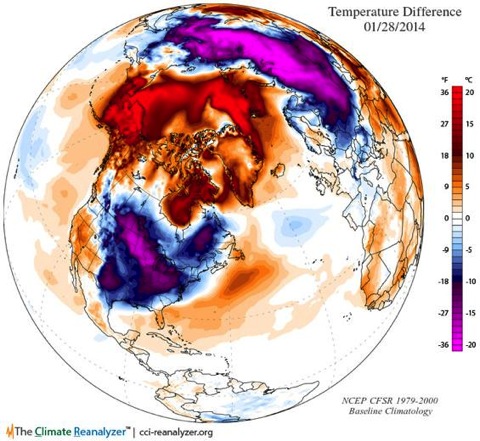For the past couple of months, global sea ice extent (Arctic plus Antarctic) has been at record low levels. The way the northern and southern seasonal cycles add up, the maximum in global sea ice extent occurs on average in early November, at around 27 million km2. This year, the global extent curve has been relatively flat since June. In past years, climate change “deniers” have pointed to the global extent curve as a way of claiming that climate change is not a problem, as the relatively high Antarctic extent was partly offsetting the Arctic loss, making it look as though nothing much was changing. Strangely enough, we’ve heard nothing from the usual “deniers” this year! Through most of November, there has been around 4 million km2 less sea ice than normal globally (peaking at 4.5 million on 20 November), an area roughly the size of Greenland missing near each pole. What’s going on? Continue reading “Global sea ice in uncharted territory”
Global sea ice in uncharted territory
The big heat of 2016 is taking its toll on sea ice at both poles



